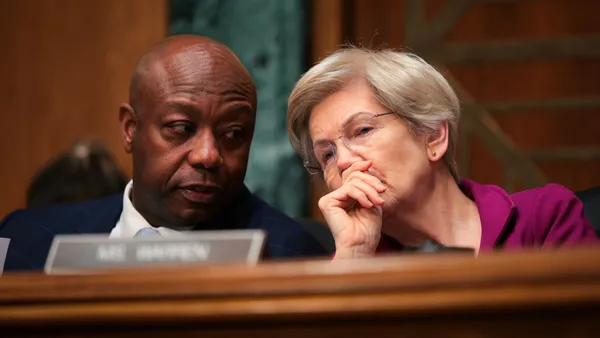Dive Brief:
- The U.S. Department of Education announced Tuesday that it is distributing more than $36 billion in funding to colleges through the latest federal coronavirus rescue package.
- The department issued a final rule, which Education Secretary Miguel Cardona told reporters on Monday will enable all students to receive the aid. The Trump administration moved to exclude certain students, including unauthorized immigrant and international students, from the first round of federal relief.
- So far, more than $76 billion in coronavirus relief funding has been earmarked for colleges across the three major aid packages, according to the department.
Dive Insight:
President Joe Biden signed the $1.9 trillion American Rescue Plan into law in March. It provides about $40 billion in direct aid to colleges and universities. Institutions must use half of that money on emergency grants for students disadvantaged by the pandemic.
In its announcement Tuesday, the department shared more details on how colleges could use those funds. For instance, they can consider a "variety of factors" when determining a students' level of need. That includes their eligibility for other federal and state aid, "significant unexpected expenses," employment or income loss, and food or housing insecurity, according to documents shared with the media. Colleges can also consider the needs of students who didn't complete a Free Application for Federal Student Aid.
The first coronavirus relief package, passed last March, prohibited students who don't qualify for federal financial aid from emergency grants. The move earned significant pushback from across higher education, particularly because it excluded unauthorized and international students. The Trump administration somewhat walked back its position, suggesting that funding from the second major relief package, passed in December, could be distributed to all students.
The new final rule follows continued requests by higher ed groups for clarity on which students can receive the aid.
"The pandemic didn't discriminate on students," Cardona said. "We want to make sure that all students have an opportunity to have access to funds to help them get back on track."
The department suggested the latest round of money can also be used for academic and mental health supports designed to help retain students. And schools can use the money to discharge students' debts accrued during the pandemic in order to help them re-enroll.
Colleges are also required to use some of the money "to implement evidence-based practices" to monitor and stamp out the coronavirus, the department said. That could include testing for the virus, offering vaccinations, and "to reduce barriers to vaccination," such as offering staff paid time off to get the shots.
And they must also use funds to inform students that they can have their financial aid awards adjusted if they or a family member loses their job.
For-profit colleges can only use the money to provide emergency aid grants to students.
During a call with reporters Monday, Cardona emphasized the department's desire to support institutions that serve students with the greatest need.
The formula used to distribute the funding favors schools with high shares of federal Pell Grant recipients. It considers headcount as well as full-time equivalent enrollment, allowing colleges with high shares of part-time students, such as community colleges, to benefit.















